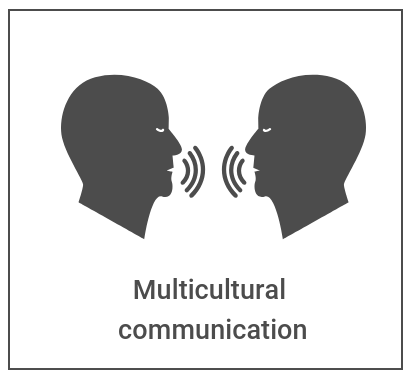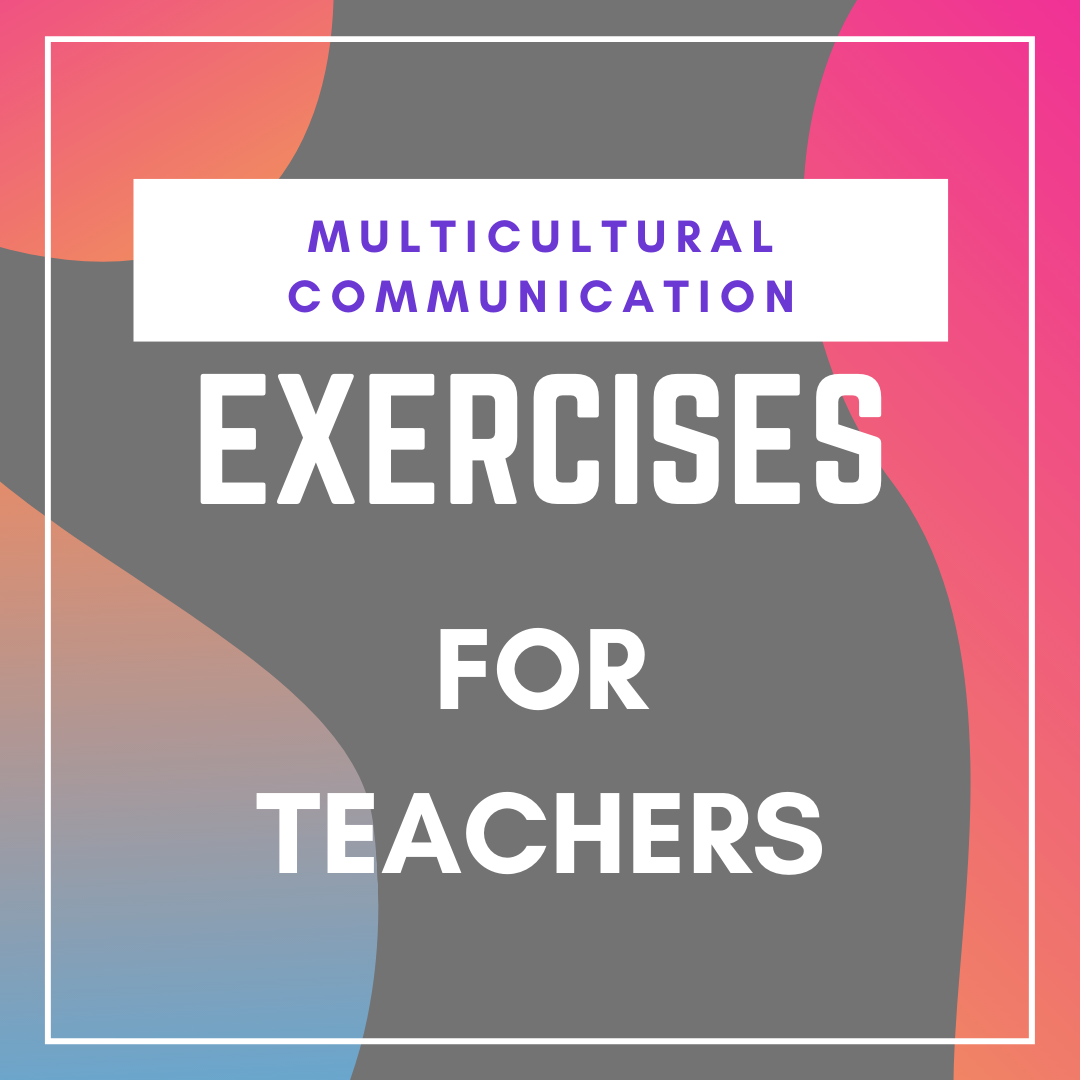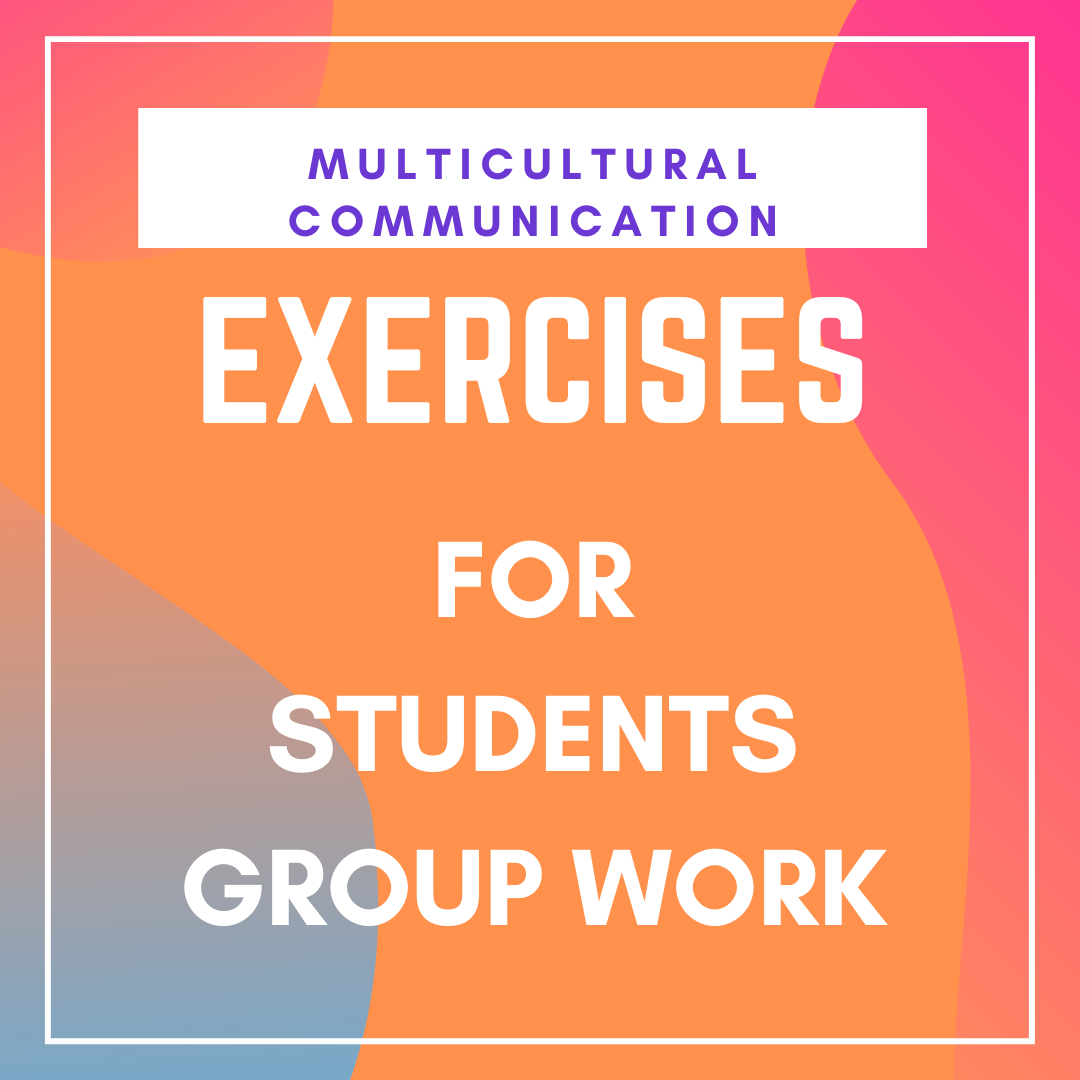MULTICULTURAL COMMUNICATION

THE WORLD NOWADAYS...
Regardless whether you are negotiating with your clients, working in a team at work, travelling or visiting a wedding abroad - it should be stressed that almost every conversation, discussion and other form of human interaction happens in some kind of a cultural overlap.
be stressed that almost every conversation, discussion and other form of human interaction happens in some kind of a cultural overlap.
THE IMPORTANCE OF MULTICULTURAL COMMUNICATION
Multicultural communication skills are crucial. As the world is becoming a smaller and smaller place, differences that occur on both our professional and personal paths are increasingly bigger and more noticeable. While working and living across nations and cultures, the comprehension and awareness of the intercultural competency is the survival issue. Very much needed to thrive. The importance of cultural competency is becoming more recognized and materials helping to develop such are required.
On many occasions, the cultural communication skill is enumerated as one of most needed to become a global leader, successful professional or grow as a person in general.
WHAT IS COMMUNICATION?
In short, communication in its’ nature is simply a process of an intentional interaction between at least two people happening in a particular reality – context and culture – aimed at passing the message from one person to the other to elicit the response.
HOW ABOUT THE CULTURE THEN?
Forbes contributor Carol Kinsey Goman once said: “Every culture has rules that its members take for granted. Few of us are aware of our own biases because cultural imprinting is begun at a very early age. And while some of culture’s knowledge, rules, beliefs, values, phobias and anxieties are taught explicitly, most is absorbed subconsciously.” The concept of culture is definitely polysemous. Each of us is a part of different cultures (maybe to some extent we could even dare to state that one is a combination of multiple cultures) and at the same time no one is a perfect representation of any culture. Culture is something learnt and acquired. Transmitted from generation to generation. No one is born ‘with’ a culture and yet, everyone is born ‘into’ so many of them. Cultural groups can be based on numerous identities, such as: gender, race, nationality, religion, sex orientation, geography, social status, age - to name just a few. Such groups create their own specific systems of believes, values, customs, lifestyles, behaviours and perceptions.
HENCE, WHAT IS A LINK BETWEEN CULTURE AND COMMUNICATION?
“Communication and culture are inextricably intertwined. Indeed, culture itself is one form of communication....” , Victor D.A.
The communication is a prerequisite for shaping cultures (or, from a different perspective, one of the processes through which cultures are created and shared). On the other hand, culture plays an enormous part in a way people express themselves, as well as understand the surrounding reality - in other words, how they communicate.
HOW TO BECOME A MASTER OF MULTICULTURAL COMMUNICATION?
Practice makes perfect as we all know, but not always experience equals expertise.
1. Change your attitude
Ethnocentrism or simplistic attitudes are bound to lead to miscommunication. Sophisticated worldviews embracing diversity among people, their various backgrounds, cultural differences and similarities foster the sense of a friendly, good-faith communication environment. Curiosity and ultimate capability to distinguish statements and facts from opinions, contexts and values are critical.
2. Become a good listener
Equally important as making sure you are being understood properly is to ensure your reception of the other person’s message is undisturbed. Sometimes the biggest problem in communication is that we listen to replay and not to understand. Learn to really listen, understand others and how to show them they are not speaking in vain.
3. Adjust your intercultural language competency
When we discuss language as a potential barrier in a communication process it is important to acknowledge that is not only about simple knowledge of vocabulary and grammar person, we are interacting with possesses. It is also about the pace we and that particular person are speaking, volume and accent. Our day-to-day language is filled with ambiguous words and phrases, professional jargon, abbreviations, colloquialism, references to current events, famous quotes, metaphors, phrasal verbs etc.
There is no doubt ‘language competency’ in intercultural context is crucial for successful communication. At the same time in such a context, language competency should not be understood as simply a comprehensive knowledge and fluency in the language, but rather a competency to adjust usage of a language depending on a person one is communicating with. In most scenarios that might even be more difficult, as it is something one has to learn independently from simply learning the language.
4. Be curious – learn about other cultures
Communicating across cultures is often a foreign territory where it is easy to be taken aback by the other sides’ words or behaviours that are particular to other cultures and uncommon to ours. Learn and show knowledge of other countries and cultures, try to familiarize yourself with customs in relevant regions. However, beware of stereotypes as you can never predict a person’s behaviour based solely on their nationality or origin. Each individual is unique.
WATCH VIDEO LESSONS ABOUT PREJUDICE AND BIAS
Download leaflet about Multicultural Communication HERE.
Differences in cultures are both a challenge and an opportunity in a communication process. It is up to you, how you choose to see it and how well you will be prepared to face them.













